Birds are an amazing example of adaptations. Each bird has unique features that help it survive in a specific habitat. Some of the birds at Potter Park Zoo have adaptations that help them find and catch food, explore their environment, and do amazing acrobatic feats.
By looking at a bird’s beak and feet you can figure out what it might eat and what kind of habitat it may live in.
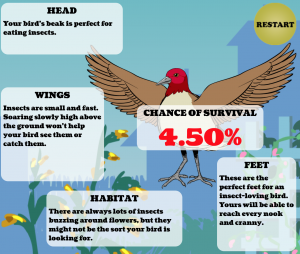 Try your hand at building a bird on Project Beak’s website! By choosing a beak, feet, and wings, this cool website will allow you to build a custom bird, and then they’ll give your bird a chance at survival.
Try your hand at building a bird on Project Beak’s website! By choosing a beak, feet, and wings, this cool website will allow you to build a custom bird, and then they’ll give your bird a chance at survival.
*Note: This link will take you away from Potter Park Zoo’s website.
Now learn about all the amazing adaptions of birds at Potter Park Zoo!
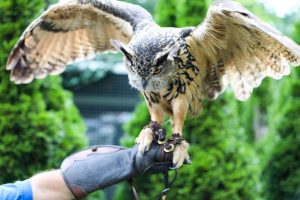 |
Eagle Owl
Owls have a sharp, hooked beak to help them catch their prey. Many owls catch small meals which they swallow whole! Eagle Owl feet contain four toes that end in long talons. These are used for catching their prey. Eurasian eagle owls can exert 350 lbs. of pressure per square inch with their talons. That is like an NFL linebacker standing on a postage stamp! Special tendons in an owl’s feet and legs let them grip their prey without their toes getting tired. |
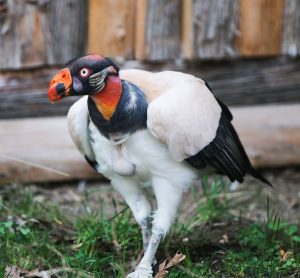 |
King Vulture This amazing bird is Vinny the king vulture. His colorful neck and head are feather-less to help keep his head clean while eating from carrion (dead animals). Vultures don’t have long claws, but their feet are perfect for walking on the ground around a prey item. Bonus Fact: Vinny is one of the oldest animals at the zoo at over 50 years of age.
|
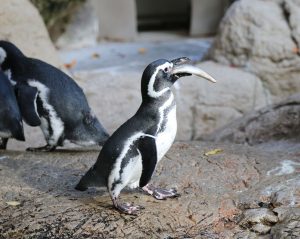 |
Magellanic Penguin
Like all penguins, their beak is long and tapered with a hook at the end for helping them grab prey. Inside the beak of these birds you will find little projections called papillae, that point down their throat. This helps them make sure their fish make it all the way down into their tummy! Magellanic penguins have slightly webbed feet which help them swim. Their feet are placed further back on their body, which is more efficient for swimming, but makes walking on land a little more difficult. This is why penguins seem to waddle on land.
|
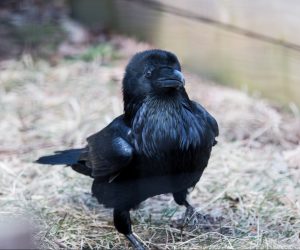 |
Raven
These black birds eat a wide variety of foods so their beak is good at many different tasks. It is the swiss army knife of beaks! Plucking berries, cracking small nuts, and catching prey, this beak can do it all. This photo of the raven’s feet helps you see their ability to perch. Birds with perching feet have three toes facing forward and one toe facing backward to help them balance on a branch. Ravens also have strong claws. |
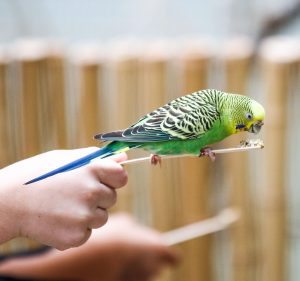 |
Budgie In the Wings of Wonder exhibit, you will find many of these small colorful birds and you might even get a chance to see their beaks in action. Budgies use their stout beaks to help eat seeds and insects. Budgies also have perching feet. When you look at their little toes, you can infer that these small birds live mostly in trees. |
 |
Green Aracari
This tropical bird uses its long beak to reach and pluck fruit and insects off of trees in its jungle home, like you would use a pair of tongs at a buffet. The jagged edge on their beak helps slice through the skin of fruit. Green Aracari have two toes facing forward and two facing backward. This helps them climb in the thick jungle where it may be difficult to reach the best food by flying. |
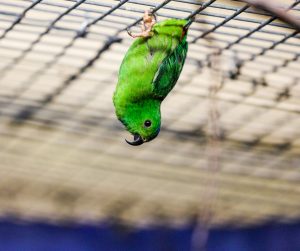 |
Green Hanging Parrot Like most parrots, these birds eat seeds, nuts, fruit, flowers and nectar. Their beak is strong enough to crack through tough nut shells but ability to manipulate small fruits and flowers. Green hanging parrots, like the aracari, have climbing feet. Their strong toes allow them to grasp onto perches in all different directions, even upside down like their name suggests.
|




